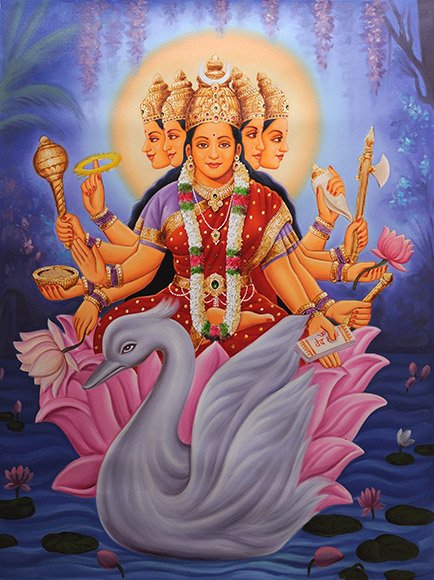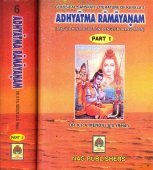Raghava, Rāghava: 17 definitions
Introduction:
Raghava means something in Hinduism, Sanskrit, Jainism, Prakrit, Marathi, Hindi. If you want to know the exact meaning, history, etymology or English translation of this term then check out the descriptions on this page. Add your comment or reference to a book if you want to contribute to this summary article.
Alternative spellings of this word include Raghav.
In Hinduism
Vaishnavism (Vaishava dharma)
Source: ISKCON Press: GlossaryRāghava (राघव).—Lord Rāmacandra, who appeared in the Raghu dynasty, the dynasty of the sun.
Source: Pure Bhakti: Brhad BhagavatamrtamRāghava (राघव) refers to:—A name of Śri Rāmacandra who appeared in the Raghu dynasty. (cf. Glossary page from Śrī Bṛhad-bhāgavatāmṛta).

Vaishnava (वैष्णव, vaiṣṇava) or vaishnavism (vaiṣṇavism) represents a tradition of Hinduism worshipping Vishnu as the supreme Lord. Similar to the Shaktism and Shaivism traditions, Vaishnavism also developed as an individual movement, famous for its exposition of the dashavatara (‘ten avatars of Vishnu’).
Purana and Itihasa (epic history)
Source: Cologne Digital Sanskrit Dictionaries: The Purana IndexRāghava (राघव).—See Rāma (s.v.);1 killed Tāḍakā;2 his consort was Sītā;3 an avatār of Viṣṇu to kill Rāvaṇa.4

The Purana (पुराण, purāṇas) refers to Sanskrit literature preserving ancient India’s vast cultural history, including historical legends, religious ceremonies, various arts and sciences. The eighteen mahapuranas total over 400,000 shlokas (metrical couplets) and date to at least several centuries BCE.
Chandas (prosody, study of Sanskrit metres)
Source: Shodhganga: a concise history of Sanskrit Chanda literatureRāghava (रघुनाथ) is another name for Raghunātha Paṇḍita Manohara (1697 C.E.), son of Bhikkam Bhaṭṭa and grandson of Śrīkṛṣṇa Bhaṭṭa of Manohara family.

Chandas (छन्दस्) refers to Sanskrit prosody and represents one of the six Vedangas (auxiliary disciplines belonging to the study of the Vedas). The science of prosody (chandas-shastra) focusses on the study of the poetic meters such as the commonly known twenty-six metres mentioned by Pingalas.
In Jainism
General definition (in Jainism)
Source: archive.org: Een Kritische Studie Van Svayambhūdeva’s PaümacariuRāghava (राघव) participated in the war between Rāma and Rāvaṇa, on the side of the latter, as mentioned in Svayambhūdeva’s Paumacariu (Padmacarita, Paumacariya or Rāmāyaṇapurāṇa) chapter 57ff. Svayambhū or Svayambhūdeva (8th or 9th century) was a Jain householder who probably lived in Karnataka. His work recounts the popular Rāma story as known from the older work Rāmāyaṇa (written by Vālmīki). Various chapters [mentioning Rāghava] are dedicated to the humongous battle whose armies (known as akṣauhiṇīs) consisted of millions of soldiers, horses and elephants, etc.

Jainism is an Indian religion of Dharma whose doctrine revolves around harmlessness (ahimsa) towards every living being. The two major branches (Digambara and Svetambara) of Jainism stimulate self-control (or, shramana, ‘self-reliance’) and spiritual development through a path of peace for the soul to progess to the ultimate goal.
Languages of India and abroad
Marathi-English dictionary
Source: DDSA: The Molesworth Marathi and English Dictionaryrāghava (राघव).—m S The name of an enormous and fabulous fish. rāghava & timiṅgila (another legendary marine monster) pursue each other round the globe. When they shall meet, face to face, the earth will be turned upside down and overwhelmed.
Marathi is an Indo-European language having over 70 million native speakers people in (predominantly) Maharashtra India. Marathi, like many other Indo-Aryan languages, evolved from early forms of Prakrit, which itself is a subset of Sanskrit, one of the most ancient languages of the world.
Sanskrit dictionary
Source: DDSA: The practical Sanskrit-English dictionaryRāghava (राघव).—[raghorgrotrāpatyam aṇ]
1) A descendant of Raghu, especially Rāma.
2) A kind of large fish; क्रोडे क्रीडतु कस्य केलिकलहत्यक्तार्णवो राघवः (kroḍe krīḍatu kasya kelikalahatyaktārṇavo rāghavaḥ) Bv.1.55.
3) Sea, ocean.
Derivable forms: rāghavaḥ (राघवः).
Source: Cologne Digital Sanskrit Dictionaries: Edgerton Buddhist Hybrid Sanskrit DictionaryRāghava (राघव).—name of a nāga king: Mahāvyutpatti 3269; Mahā-Māyūrī 246.32.
Source: Cologne Digital Sanskrit Dictionaries: Shabda-Sagara Sanskrit-English DictionaryRāghava (राघव).—m. (vaḥ) 1. A name of Ramachandra. 2. A sort of fish. E. raghu the ancestor of the demi-god, and aṇ aff. of descent.
Source: Cologne Digital Sanskrit Dictionaries: Benfey Sanskrit-English DictionaryRāghava (राघव).—i. e. raghu + a, patronym., m. (cf. raghu), 1. A descendant of Raghu; a name of Rāma, [Rāmāyaṇa] 3, 48, 8. 2. A sort of fish. 3. The ocean.
Source: Cologne Digital Sanskrit Dictionaries: Cappeller Sanskrit-English DictionaryRāghava (राघव).—[masculine] descendant of Raghu, [Epithet] of [several] princes, [especially] of Rāma.
Source: Cologne Digital Sanskrit Dictionaries: Aufrecht Catalogus Catalogorum1) Rāghava (राघव) as mentioned in Aufrecht’s Catalogus Catalogorum:—son of Gaṇeśa, father of Vatsarāja (Vārāṇasīdarpaṇakāśikā 1641). L. 765.
2) Rāghava (राघव):—Gaṇeśastuti.
3) Rāghava (राघव):—Virahiṇīmanovinodaṭīkā.
4) Rāghava (राघव):—Vaidyavilāsa.
5) Rāghava (राघव):—father of Caṇḍīdāsa (Karaṇakutūhalaṭīkā).
6) Rāghava (राघव):—q. v.: Vaidyavilāsa.
Rāghava has the following synonyms: Raghunātha.
7) Rāghava (राघव):—Triṃśacchlokīṭīkā.
Source: Cologne Digital Sanskrit Dictionaries: Monier-Williams Sanskrit-English Dictionary1) Rāghava (राघव):—m. ([from] raghu) a descendant of Raghu [patronymic] of Aja, of Daśa-ratha, and ([especially]) of Rāma-candra ([dual number] rāghavau = Rāma and Lakṣmaṇa), [Rāmāyaṇa; Raghuvaṃśa] etc.
2) Name of various authors and others (also with ācārya, bhaṭṭa, pañcānana-bhaṭṭācārya, cakravartin, rāya etc.), [Catalogue(s)]
3) of a serpent-demon, [cf. Lexicographers, esp. such as amarasiṃha, halāyudha, hemacandra, etc.]
4) the seas, ocean, [cf. Lexicographers, esp. such as amarasiṃha, halāyudha, hemacandra, etc.]
5) a species of large fish, [cf. Lexicographers, esp. such as amarasiṃha, halāyudha, hemacandra, etc.]
Source: Cologne Digital Sanskrit Dictionaries: Yates Sanskrit-English DictionaryRāghava (राघव):—(vaḥ) 1. m. Rāmachandra; large sea fish.
[Sanskrit to German]
Sanskrit, also spelled संस्कृतम् (saṃskṛtam), is an ancient language of India commonly seen as the grandmother of the Indo-European language family (even English!). Closely allied with Prakrit and Pali, Sanskrit is more exhaustive in both grammar and terms and has the most extensive collection of literature in the world, greatly surpassing its sister-languages Greek and Latin.
Hindi dictionary
Source: DDSA: A practical Hindi-English dictionaryRāghava (राघव) [Also spelled raghav]:—(nm) Ram (see)—an outstanding personage of the Raghu or Solar dynasty of ancient India.
...
See also (Relevant definitions)
Starts with (+16): Raghava acarya, Raghava bhatta, Raghava cakravartin, Raghava pancanana bhattacarya, Raghava pandita, Raghavabhatta, Raghavabhyudaya, Raghavacaitanya, Raghavacaritra, Raghavadeva, Raghavala, Raghavali, Raghavanaishadhiya, Raghavananda, Raghavananda muni, Raghavananda sarasvati, Raghavananda sharman, Raghavananda yati, Raghavanandana, Raghavanuja.
Ends with (+2): Adbhutaraghava, Alamkararaghava, Amogharaghava, Anandaraghava, Anargharaghava, Anarghyaraghava, Bhatta raghava, Gitaraghava, Janakiraghava, Muditaraghava, Prasannaraghava, Ramaniyaraghava, Raya raghava, Rayaraghava, Samgitaraghava, Shrinivasaraghava, Sitaraghava, Udararaghava, Udattaraghava, Unmattaraghava.
Full-text (+218): Raghaviya, Raghaveshvara, Raghavapandava, Raghavapandaviya, Raghavapanditiya, Raghavayadavapandaviya, Rayaraghava, Antardaha, Arthoddyotanika, Ganeshastuti, Udattaraghava, Anargharaghava, Raghav, Raghavapandavayadaviya, Raghavapandavaprakasha, Raghavarahasya, Raghavayadaviyacarita, Raghavavilasa, Raghavaprabandha, Raghavadeva.
Relevant text
Search found 48 books and stories containing Raghava, Rāghava; (plurals include: Raghavas, Rāghavas). You can also click to the full overview containing English textual excerpts. Below are direct links for the most relevant articles:
Garga Samhita (English) (by Danavir Goswami)
Verse 1.4.38 < [Chapter 4 - Description of Questions About the Lord’s Appearance]
Verse 5.11.3 < [Chapter 11 - The Stories of Kubjā and Kuvalayāpīḍa]
Verse 5.15.31 < [Chapter 15 - Seeing Sri Radha]
Trishashti Shalaka Purusha Caritra (by Helen M. Johnson)
Part 3: Reunion of Rāma and Sītā < [Chapter VIII - The abandonment of Sītā]
Part 2: Sāhasagati as a false Sugrīva < [Chapter VI - Bringing news of Sītā]
Part 10: Lakṣmaṇa’s household < [Chapter VIII - The abandonment of Sītā]
Brihad Bhagavatamrita (commentary) (by Śrī Śrīmad Bhaktivedānta Nārāyana Gosvāmī Mahārāja)
Verse 2.1.75 < [Chapter 1 - Vairāgya (renunciation)]
Ramayana (by Manmatha Nath Dutt)
Chapter LXVIII < [Book 1 - Bāla-kāṇḍa]
Chapter LXVII < [Book 1 - Bāla-kāṇḍa]
Chapter LXVI < [Book 1 - Bāla-kāṇḍa]
Hanuman Nataka (critical study) (by Nurima Yeasmin)
5. Family Order depicted in the Hanumannāṭaka < [Chapter 5]
3. Habit and Custom in the Hanumannāṭaka < [Chapter 5]
7. Information of Various Flora and Fauna < [Chapter 5]
Ramayana of Valmiki (by Hari Prasad Shastri)
Chapter 50 - Garuda liberates Rama and Lakshmana < [Book 6 - Yuddha-kanda]
Chapter 51 - Dhumraksha goes out to fight the Monkeys < [Book 6 - Yuddha-kanda]
Chapter 74 - Hanuman goes to the Mountain of Medicinal Herbs < [Book 6 - Yuddha-kanda]
Related products
